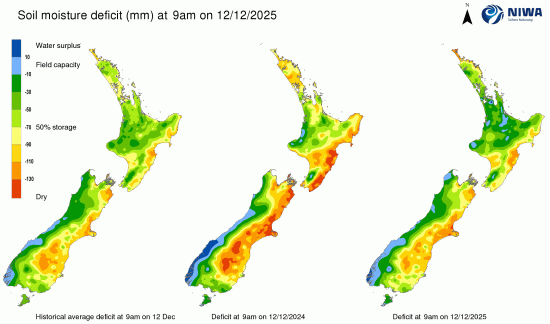
Here's our summary of key economic events overnight that affect New Zealand, with news of strong US wage gains, complicating the Fed's December decision.
The US labour market has again outperformed analysts expectations with a headline seasonally adjusted rise of +262,000 non-farm payroll jobs in November when a +200,000 was expected. The labour market expansion hasn't stalled yet. But as regular readers know, we also look at the raw, unadjusted data, and that shows payrolls actually rose +574,000 to 155 mln and a new record high. That is +4.8 mln more employed than a year ago, and almost +2 mln more employed than the peak pre-pandemic. That is a lot of extra payroll cascading through the giant American economy. It is no wonder that some analysts think a softer landing is possible.
The same data shows that US hourly earnings rose +5.8% in the year to November, and weekly earnings were up +4.9%. Hourly earnings are rising at a faster annualised pace in November from October, up at the rate of +8.1%. Workers seem to be keeping up, and that demand-induced gain is consistent with a tight labour market.
Wall Street seemed under pressure after this data was released, now unsure whether the US Fed will ease back in the way that was signaled earlier in the week. Clearly wage-push inflation is a policy 'thing', and the much larger expansion of the overall workforce is providing the currency to sustain higher prices for longer.
That's not to say its all roses. It isn't. The Fed's Beige Book surveys show that businesses expressed greater uncertainty and increased pessimism for the American economy as prices and interest rates continue to rise.
Canada's labour market also turned in a better-than-expected result in November too. Total employment was little changed in November (+10,000), but that follows a big increase of +108,000 in October and the November data shows the prior month's result was not an outlier.
In China, the pressure on property developers is never-ending. To bail them out, Beijing has ordered its top four state-owned banks to issue offshore loans to help developers repay overseas debt. And toi encourage buyers to return, mortgage interest rates for first home loans have been dropped by over one percentage point since the start of 2022. As of the end of November, the average first home loan rate in China stood at 4.17%.
In Europe, producer prices are now falling, and quite quickly after a heady, uncontrolled run-up induced by Russia's invasion of Ukraine. They fell -2.5% in October from September (or falling at an annualised -30 rate), but they are still +31 higher than year-ago levels.
Global food prices eased slightly in November, continuing a downward trend since the peak in March. Prices for both meat and dairy contributed to the easing.
The UST 10yr yield starts today at 3.53% and down -2 bps overnight. A week ago it was at 3.69% so a -13 bps drop since. The UST 2-10 rate curve is little-changed again at -76 bps. And their 1-5 curve is still inverted at -98 bps, while their 30 day-10yr curve is less inverted at -29 bps. The Australian ten year bond is down -8 bps at 3.38%. The China Govt ten year bond is unchanged at 2.92%. And the New Zealand Govt ten year will start today down -9 bps at 4.03%.
Wall Street has opened its Friday session soft again, with the S&P500 down -0.5% but heading for a weekly rise of +1.2%. Overnight European markets all closed down about -0.2% except Frankfurt which was up +0.3%. Yesterday, Tokyo ended down -1.6% to end its week down also -1.6%. Hong Kong was down -0.3% yesterday but that locked in a spectacular +9.9% weekly leap. And Shanghai closed down -0.3% for a weekly gain of +3.3%. The ASX200 ended its Friday session down -0.7% for a weekly rise of +0.6%, while the NZX50 ended Friday down a mere -0.1% but that meant it booked a +2.2% weekly rise, largely on the back of F&P Healthcare's +16.4% rise in capitalisation for the week.
The price of gold will open today down -US$6 to US$1796/oz. A week ago it was US$1753/oz, so a +US$43 gain since then, mostly exchange-rate induced.
And oil prices start today down -US$1 from this time yesterday at just over US$81/bbl in the US while the international Brent price is down to just over US$86/bbl. These are about +US$4 higher for the week as the US dollar sank. The EU has reached a deal to impose a US$60/bbl cap on Russian oil exports.
And we should note that the distribution of hydrogen as a fuel, via liquid ammonia, may have taken a very big step ahead with a new inexpensive light catalyst development that solves many practical issues for the fuel.
The Kiwi dollar will open today at 64 USc, and up another +¼c since this time yesterday to it highest since August. Against the Australian dollar we are +½c firmer at 94.1 AUc and an eleven month high. Against the euro we are firm at 60.8 euro cents and a two month high. That all means our TWI-5 starts today at 72.3 and a three month high.
The bitcoin price is now at US$16,965 and virtually unchanged from this time yesterday. A week ago it was at US$16,496. Volatility over the past 24 hours has low at just +/- 0.9%.
The easiest place to stay up with event risk today is by following our Economic Calendar here ».
Daily exchange rates
Select chart tabs
11 Comments
Yet, it seems the labor market remains pretty healthy... ...but does it really? Let's look a bit deeper, and we'll realize there are quite a lot of interesting things going on.
For one, the household job survey shows literally no jobs have been added in 8 months while the establishment survey shows 2.7 million jobs added. Wait, what? No jobs or +2.7 million jobs added? The answer mostly lies in how the different surveys are run.
The household survey counts a person holding three jobs as one employed person. The establishment survey counts that as...3 jobs being created. Over 700k Americans have had to get a second or third job in the last 12 months to make ends meet, and NFP double-counts them.
On top of it, the BLS keeps telling us that after the pandemic the net birth/death in the creation of new businesses is literally double (!) of what it was before. Obviously it's not. It's most likely due to a statistical adjustment the BLS talks about on their own website. Link
Be careful/sceptical about Zerohedge and Daniel Ivandjiisk sources. Wikipedia
The EU has reached a deal to impose a US$60/bbl cap on Russian oil exports.
WHY EUROPE IS BEING SAVED BY RUSSIAN LNG, NOT AMERICAN LNG
While pipeline gas supplies from Russia are under scrutiny, the European Union (EU) is quietly buying up more and more volumes of the other Russian gas – that is, liquefied natural gas (LNG). Europe’s costs of importing Russian LNG have soared to record levels, Bloomberg has discovered. How did Russia start supplying more liquefied natural gas to Europe and, most importantly, why do the Europeans themselves see nothing terrible in this?
And we should note that the distribution of hydrogen as a fuel, via liquid ammonia, may have taken a very big step ahead with a new inexpensive light catalyst development that solves many practical issues for the fuel.
Pity it doesn't address the elephant in the room, the huge energy cost of making Ammonia in the first place.
Ammonia is currently mostly produced from fossil fuels by the highly energy and carbon intensive Haber–Bosch process, which requires temperatures of 450-500 °C and pressures up to 200 bar. The energy consumed by the process is 10-15 kWh/kg.
10kwh = 65kms in an EV, how far does 1kg of ammonia get you, and how much went into obtaining the raw materials for making Ammonia. Sounds like you are better off just using the fossil fuel in it (near) original form.
Ironic
Highlights the danger of having a system reliant on importing energy in any form.
Also, its not a ban, its restriction to essential travel only at level 3 ( of?) an energy rationing strategy.
From the der spiegel article:
The restrictions in e-mobility are only intended for escalation level 3, according to the draft. Before that, austerity measures would take effect in private households. Washing machines, for example, should then only run at a maximum of 40 degrees. Leaf blowers, patio heaters, seat heaters in chair lifts may not be operated. And videos from streaming services should only be shown in SD resolution.
Not sure how much energy you going to save by having a 60inch TV showing a programme in potato vision vs high Def..
Reliance on fossil fuels to make industrial quantities of ammonia for nitrogen fertilisers is one of humanity's greatest perils.
"This week the prices offered to anybody – anybody! – who could guarantee to supply power on the chilly, windless evening of 29 November shot up briefly to about £1,100 per megawatt-hour (MWh), more than ten times the normal rate. Demand was forecast to peak at 41.2 gigawatts, supply at 40.7. In the words of Mr Micawber: result, misery. At such a price, enough supply did indeed come out of the woodwork, but not from the wind industry, which can’t just turn on the wind when it wants. Growing reliance on unreliable wind has left Britain paying sky-high prices on still, cold days.
Claims that onshore wind is cheap come thick and fast from politicians in thrall to the most well oiled of crony-capitalist industries, the wind merchants. The claims are not supported by the accounts of onshore wind farms, which indicate a breakeven cost of around £80/MWh for the very cheapest farms. And this, note, is for the efficient wind farms with 200-metre turbines (twice the typical height), located in the windiest sites and spaced at least 1,200 metres apart so they don’t they steal each other’s wind. The cost estimate doesn’t even count the need to carefully manage backup power generation for those times and places where the wind is not blowing hard enough, or blowing too hard. Nor does it count the cost of building and running transmission lines from remote wind farms to places where people actually live."
https://www.spectator.co.uk/article/the-tories-wind-power-delusion/?mc_…
UK needs more storage capacity and it is coming. The high spot prices will accelerate this.
NZ is better placed. We have some of the best onshore wind resources on the planet (with LCOE of 2-3c/kWh) and a lot of instant hydro backup for windless days. Add Lake Onslow and low carbon energy independence will become a reality at a fraction of the cost of other countries.


We welcome your comments below. If you are not already registered, please register to comment
Remember we welcome robust, respectful and insightful debate. We don't welcome abusive or defamatory comments and will de-register those repeatedly making such comments. Our current comment policy is here.